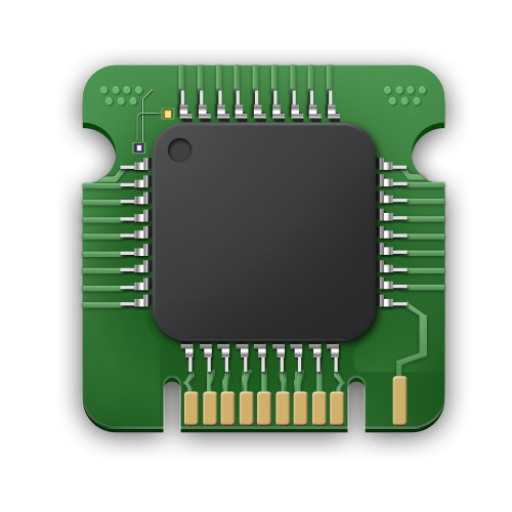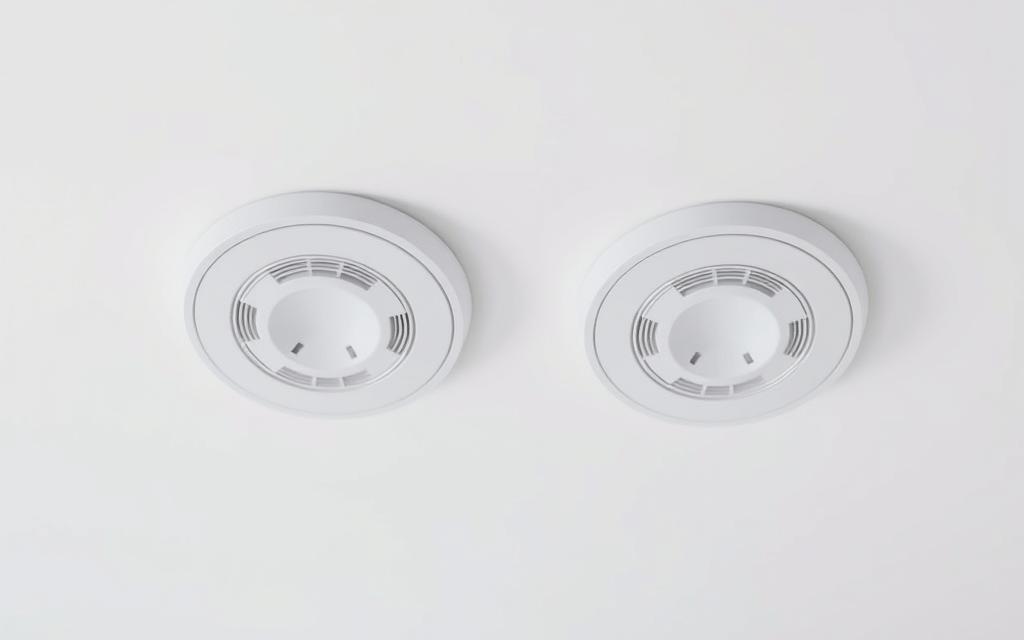Smoke detectors are a crucial component of fire safety in homes and businesses. They provide early warnings in the event of a fire, saving lives and property. There are two primary technologies used in smoke detectors: ionization and photoelectric.
Understanding the differences between these technologies is essential for making informed decisions about which type of smoke detector is best suited for various locations. Ionization smoke detectors are effective at detecting fast-flaming fires, while photoelectric detectors excel at identifying smoldering fires.
By exploring the science behind each detection method and their respective strengths, readers can gain a comprehensive understanding of how to ensure optimal fire safety.
Understanding Smoke Detector Basics
Understanding the basics of smoke detectors is essential for ensuring home safety and preventing fire-related hazards. Household smoke detectors, also known as smoke alarms, generally issue an audible or visual alarm from the detector itself or several detectors if there are multiple devices interconnected.
The Critical Role of Smoke Detectors in Home Safety
Smoke detectors play a critical role in home safety by providing early warnings of potential fire hazards. Modern interconnected smoke alarm systems enhance safety by ensuring that when one detector activates, all alarms throughout the home sound simultaneously, alerting occupants regardless of their location relative to the fire’s origin.
How Smoke Detectors Save Lives
Smoke detectors save lives by providing crucial early warning of fire conditions, often detecting smoke before it’s visible to occupants and while a fire is still in its early, more manageable stages. Some key benefits of smoke detectors include:
- Detecting smoke early, allowing for timely evacuation and reducing the risk of injury or death.
- Alerting occupants during nighttime hours when they are most vulnerable to fire hazards.
- Minimizing property damage by enabling faster emergency response.
- Providing a critical layer of fire protection in homes.
- Enhancing overall safety by ensuring that occupants are aware of potential hazards.
For more detailed information on how smoke detectors work, visit NIST’s guide on smoke detectors.
What Are the Two Types of Smoke Detector Technologies?
When it comes to smoke detectors, there are two fundamental technologies that homeowners should be aware of: ionization and photoelectric. Understanding these technologies is crucial for selecting the right smoke detector for your home.
Ionization Technology
Ionization smoke detectors contain a small amount of radioactive material, which ionizes the air inside the detector, allowing a small electric current to flow. When smoke particles enter the detector, they disrupt this current, triggering the alarm. Ionization detectors are highly effective at detecting fast-flaming fires, which produce smaller smoke particles.
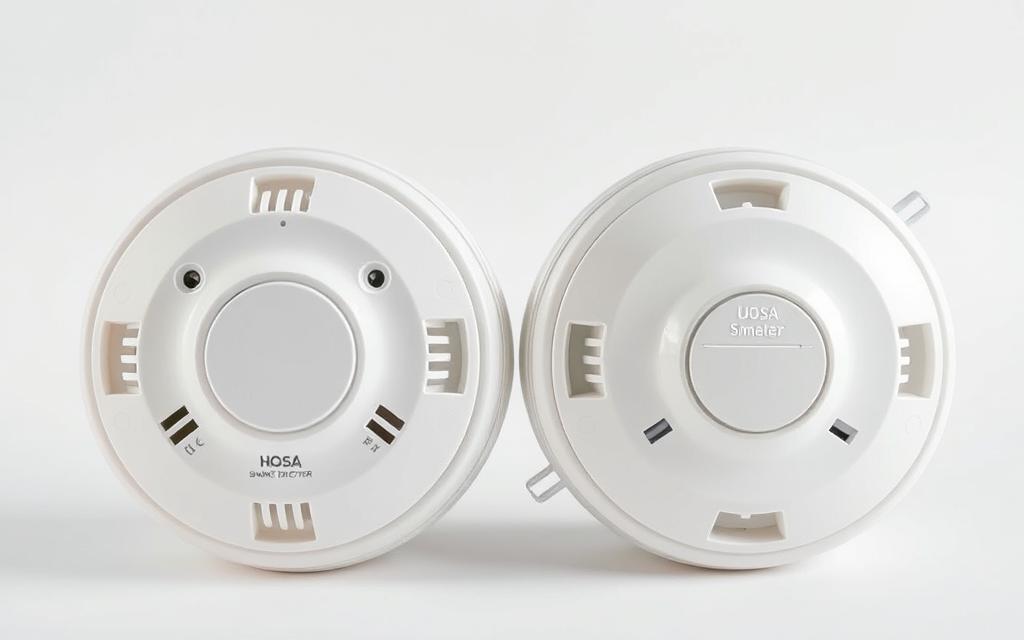
Photoelectric Technology
Photoelectric smoke detectors, on the other hand, use a light source, typically an LED, and a photosensor to detect smoke. The light beam is directed into a sensing chamber, where it is scattered by smoke particles, triggering the alarm. Photoelectric detectors excel at detecting larger smoke particles produced by smoldering fires, which often generate significant smoke before visible flames appear.
- Photoelectric smoke detectors operate using a light source and a photosensor positioned at an angle within a sensing chamber.
- Under normal conditions, the light beam travels uninterrupted; however, when smoke particles enter, they scatter the light, causing some of it to reflect onto the photosensor and trigger the alarm.
- This technology was developed as an alternative to ionization detectors, offering different detection characteristics.
Both technologies have their strengths and weaknesses, and understanding these differences is essential for choosing the right smoke detector for your home.
How Ionization Smoke Detectors Work
Ionization smoke detectors are a crucial component of home safety, utilizing a unique technology to detect smoke particles. These detectors are designed to identify the presence of smoke by using a small amount of radioactive material to ionize the air inside the detection chamber.
The Science Behind Ionization Chambers
The ionization chamber is the heart of an ionization smoke detector. It consists of two electrodes with a small amount of americium-241, a radioactive isotope, placed between them. The americium-241 emits alpha particles, which ionize the air molecules between the electrodes, creating a small electric current. When smoke particles enter the chamber, they disrupt this current, triggering the alarm.
The design of the ionization chamber is critical to the detector’s operation. The chamber is typically designed to allow air to flow through it freely, ensuring that smoke particles can enter and be detected. The electrodes are usually made of a conductive material, and the chamber is designed to minimize the risk of false alarms.
Radioactive Elements in Ionization Detectors
Americium-241 is used in ionization smoke detectors due to its properties as an alpha emitter with a half-life of 432.6 years. This ensures that the detector remains operational over its intended lifespan. The amount of americium-241 used is very small, approximately 0.3 micrograms, which is well below regulatory thresholds for consumer products.
The use of alpha radiation in ionization detectors is advantageous because it has low penetrative power and is safely contained within the detector. The alpha particles cannot pass through the plastic housing of the detector or the air, making the device safe for household use. The radiation exposure from a properly functioning ionization smoke detector is minimal, far less than the natural background radiation we experience daily.
How Photoelectric Smoke Detectors Work
Photoelectric smoke detectors operate on a sophisticated principle that involves the scattering of light by smoke particles. This technology has become a crucial component in home safety systems, offering a reliable means of detecting smoldering fires.
The Light-Scattering Detection Method
The light-scattering detection method is fundamental to how photoelectric smoke detectors identify smoke. In these detectors, a light source, typically an LED, emits a beam of light into an optical chamber. Under normal conditions, this light is not directed at the sensor, keeping it in the dark. However, when smoke particles enter the chamber, they scatter the light in various directions, some of which reaches the sensor, triggering the alarm. This method is particularly effective at detecting the larger particles produced by smoldering fires.
Key aspects of the light-scattering detection method include:
- The use of a light beam that is not directly aimed at the sensor.
- The scattering of light by smoke particles, which then reach the sensor.
- Effectiveness in detecting larger smoke particles from smoldering fires.
Optical Chamber Design and Function
The design of the optical chamber is critical to the performance of photoelectric smoke detectors. Modern detectors often feature a labyrinth or maze-like chamber that allows smoke to enter while keeping ambient light out. The chamber is engineered with baffles and light traps to prevent direct illumination of the photosensor under normal conditions, ensuring that only scattered light from smoke particles triggers the alarm.
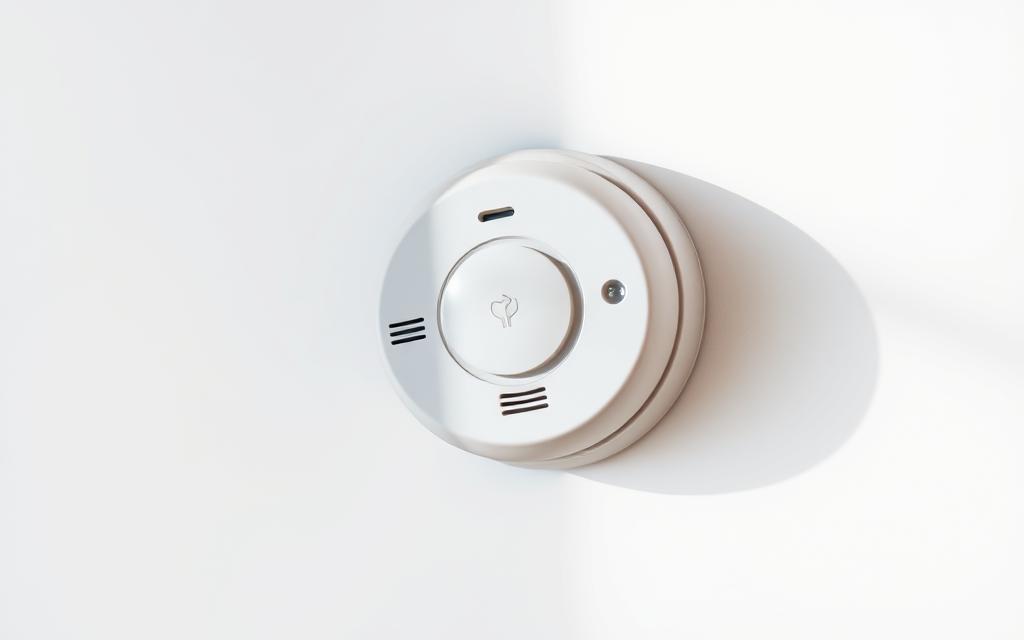
| Design Feature | Function |
|---|---|
| Labyrinth or Maze-like Chamber | Allows smoke entry while blocking ambient light |
| Baffles and Light Traps | Prevents direct illumination of the photosensor |
| Optimized Chamber Size and Shape | Enhances detection of specific particle sizes |
Advanced optical chamber designs also incorporate features to compensate for dust accumulation and component aging, ensuring consistent detection sensitivity throughout the detector’s operational life. By understanding the intricacies of photoelectric smoke detector technology, users can better appreciate the importance of regular maintenance and the role these detectors play in home safety.
Performance Differences Between Ionization and Photoelectric Detectors
Ionization and photoelectric smoke detectors have distinct performance characteristics in detecting fires, making it essential to understand their differences for optimal home safety.
Response to Flaming Fires
Ionization smoke detectors are generally more responsive to flaming fires, which produce smaller particles that are easily detected by the ionization chamber. These fires tend to grow rapidly, and ionization detectors can provide timely warnings. However, photoelectric smoke detectors also offer adequate warning for flaming fires, albeit with a slightly slower response time. According to studies, while photoelectric alarms may not be as quick as ionization alarms for rapidly growing fires, they still provide sufficient warning for all types of fires.
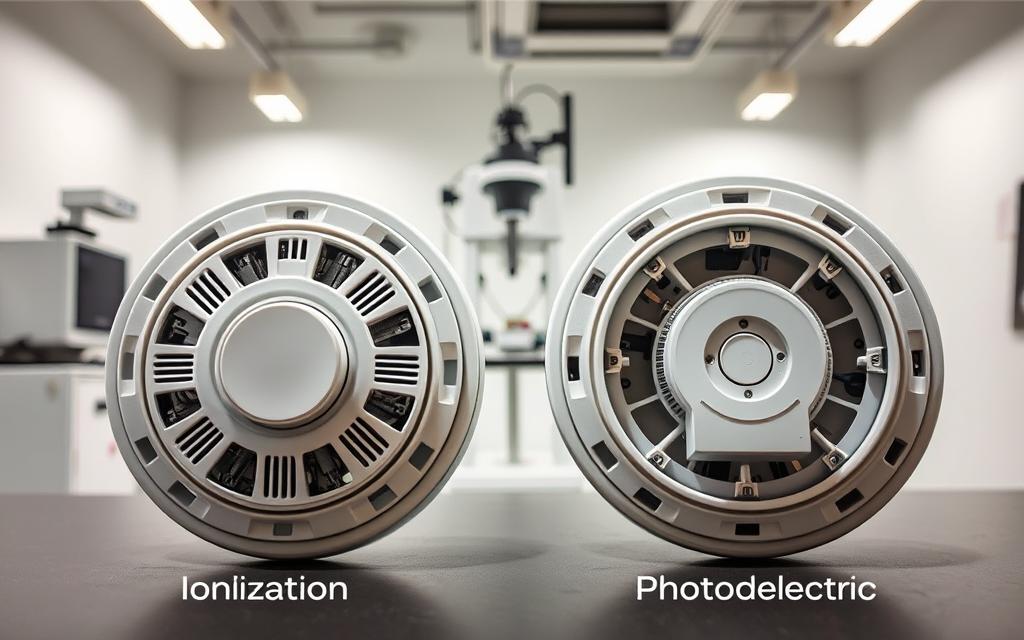
Response to Smoldering Fires
Photoelectric smoke detectors significantly outperform ionization detectors when it comes to detecting smoldering fires. These fires, which can generate substantial smoke for hours before transitioning to visible flames, are particularly dangerous because they often occur during nighttime hours when occupants are sleeping. The National Fire Protection Association (NFPA) acknowledges that photoelectric smoke detection is generally more responsive to fires that begin with a long period of smoldering. Laboratory testing has shown that photoelectric detectors can respond to smoldering fires 15-50 minutes earlier than ionization detectors, providing crucial evacuation time.
The superior performance of photoelectric technology in detecting smoldering fires is critical because many residential fires begin as smoldering events, especially those starting in upholstered furniture, mattresses, and electrical wiring. By detecting these fires early, photoelectric smoke detectors can significantly enhance home safety.
Advantages and Disadvantages of Ionization Smoke Detectors
As a common type of smoke detector, ionization models have distinct strengths and weaknesses that impact their performance in various fire scenarios. Ionization smoke detectors are designed to detect particles produced by fires, but their effectiveness varies depending on the type of fire.
Strengths of Ionization Technology
Ionization smoke detectors have some notable advantages. They are generally less expensive than photoelectric detectors, making them a cost-effective option for many homeowners. Additionally, they are effective at detecting fast-flaming fires, which can quickly spread and cause significant damage.
A comparison of the two main types of smoke detectors is provided in the table below:
| Detector Type | Response to Flaming Fires | Response to Smoldering Fires |
|---|---|---|
| Ionization | Fast | Slow |
| Photoelectric | Slow | Fast |
Limitations and Concerns
Despite their advantages, ionization smoke detectors have several limitations and concerns. They are more prone to false alarms triggered by cooking fumes, shower steam, and dust, which can lead to user frustration and the dangerous practice of disabling detectors. Furthermore, ionization detectors are significantly slower to respond to smoldering fires, which can be 15-50 minutes later than photoelectric detectors, representing a serious limitation as many fatal residential fires begin as smoldering events.
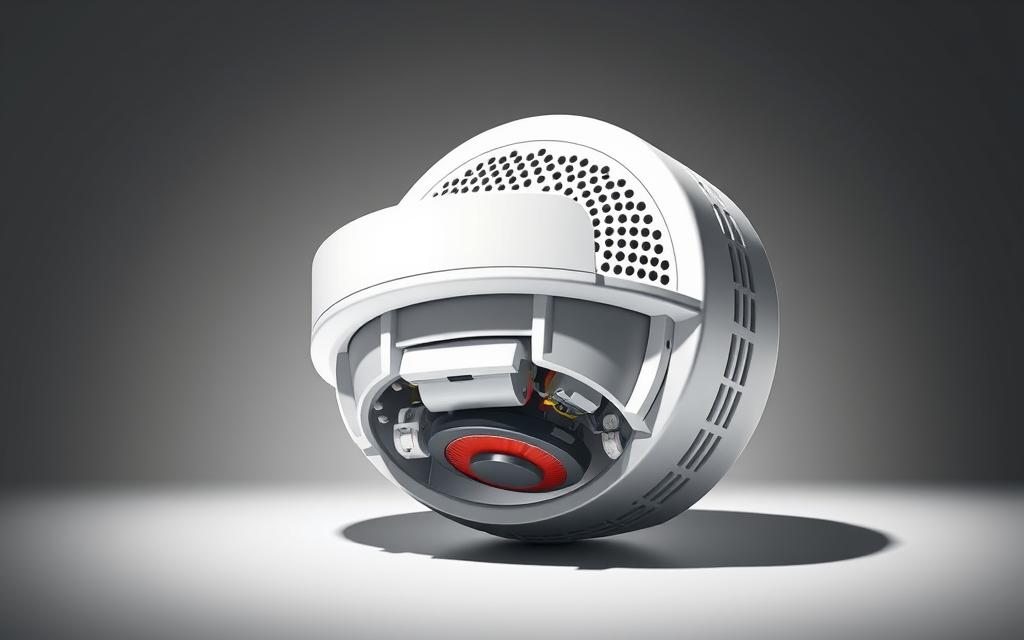
The presence of radioactive material in ionization detectors, while safe during normal operation, raises disposal concerns and has led some jurisdictions to implement special handling requirements or outright bans on ionization detectors. Homeowners should be aware of these limitations when choosing a smoke detection system.
Advantages and Disadvantages of Photoelectric Smoke Detectors
Photoelectric smoke detectors have gained popularity due to their effectiveness in detecting smoldering fires. These detectors use a light source and a photosensor to identify smoke particles, making them particularly effective in certain fire scenarios.
Strengths of Photoelectric Technology
One of the primary strengths of photoelectric smoke detectors is their ability to detect smoldering fires, which produce larger smoke particles. This makes them ideal for detecting fires in their early stages. The technology is also less prone to false alarms from cooking or steam, as it relies on the scattering of light by smoke particles rather than ionization. Key benefits include:
- Effective detection of smoldering fires
- Reduced false alarms from non-fire sources
- Sensitivity to large smoke particles
Limitations and Concerns
While photoelectric smoke detectors offer several advantages, they also have some limitations. For instance, they tend to be more expensive than ionization detectors, which can be a barrier to widespread adoption. Additionally, they may respond more slowly to fast-flaming fires. Other concerns include:
- Higher cost compared to ionization detectors
- Potential for slower response to flaming fires
- Need for regular maintenance to ensure optimal performance
Overall, understanding the strengths and limitations of photoelectric smoke detectors is crucial for making informed decisions about fire safety in residential settings.
False Alarm Tendencies in Different Smoke Detector Types
Different smoke detector technologies have distinct false alarm characteristics that homeowners should be aware of. Understanding these differences is crucial for minimizing unnecessary alarms and ensuring the effectiveness of smoke detection systems.
Common Causes of False Alarms
False alarms can be triggered by various factors, including cooking fumes, dust accumulation, and steam from bathrooms. Ionization detectors are more prone to false alarms due to their sensitivity to particles. To mitigate this, proper placement and regular maintenance are essential.
- Installing smoke detectors at a safe distance from cooking appliances and bathrooms can significantly reduce false alarms.
- Regular cleaning of smoke detectors according to the manufacturer’s guidelines helps prevent dust accumulation.
Reducing False Alarm Frequency
Several strategies can be employed to minimize false alarm frequency. These include using “hush” or “silence” features on modern smoke detectors, installing bathroom exhaust fans, and utilizing advanced detectors with multiple sensors and microprocessor-controlled algorithms.
| Strategy | Description | Benefit |
|---|---|---|
| Proper Placement | Install detectors away from cooking appliances and bathrooms. | Reduces false alarms triggered by cooking fumes and steam. |
| Regular Maintenance | Clean detectors according to manufacturer guidelines. | Prevents dust accumulation that can trigger false alarms. |
| Advanced Detectors | Use detectors with multiple sensors and algorithms. | Distinguishes between actual fires and false alarm triggers. |
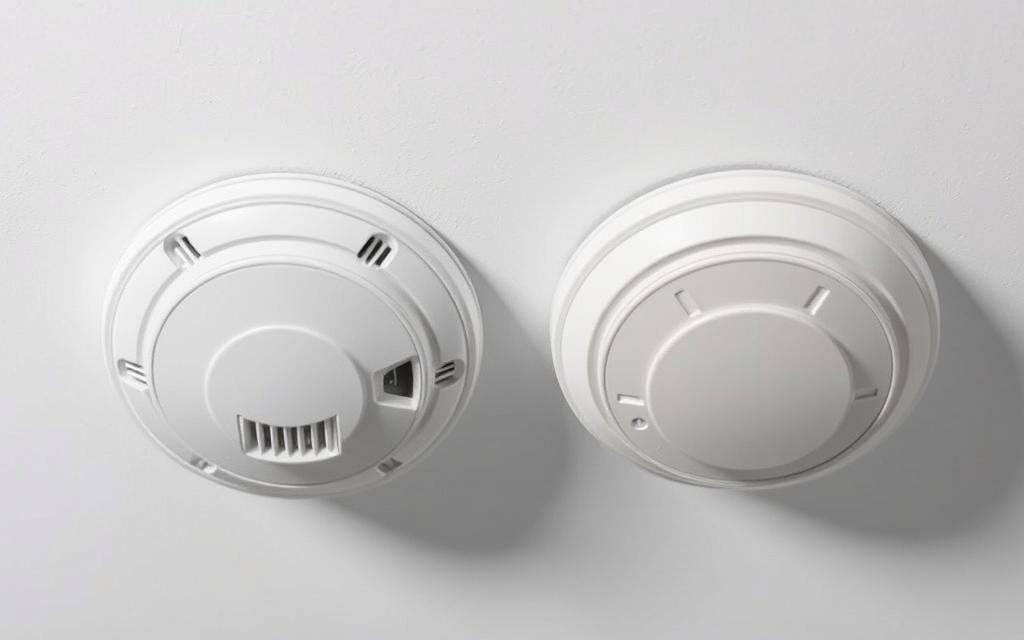
Combination and Dual-Sensor Smoke Detectors
Advancements in smoke detection have resulted in the creation of dual-sensor detectors that combine the benefits of both ionization and photoelectric technologies. This integration enhances fire safety by providing comprehensive protection against various types of fires.
How Dual-Sensor Technology Works
Dual-sensor smoke detectors work by combining ionization and photoelectric sensing methods. The ionization technology is effective at detecting particles produced by flaming fires, while the photoelectric method excels at identifying the larger particles typically generated by smoldering fires. By integrating both technologies, these detectors can respond to a wider range of fire scenarios, reducing the likelihood of a fire going undetected.
Benefits of Combined Detection Methods
The benefits of dual-sensor smoke detectors include enhanced reliability and comprehensive protection. Some key advantages are:
- Improved detection of both smoldering and flaming fires
- Reduced likelihood of false alarms due to the complementary nature of the detection technologies
- The potential for incorporating carbon monoxide detection, enhancing overall safety
- Redundancy in case one sensing method fails, ensuring continued functionality
As emphasized by the National Fire Protection Association (NFPA) and fire safety experts, the use of dual-sensor or combination smoke detectors is a recommended practice for optimal fire safety.
Power Sources for Smoke Detectors
Understanding the different power sources for smoke detectors is essential for ensuring they work when needed. Smoke detectors can be powered in various ways, each with its own advantages and considerations.
Battery-Powered vs. Hardwired Systems
Smoke detectors can be either battery-powered or hardwired into a home’s electrical system. Battery-powered detectors are easy to install and can be placed virtually anywhere, making them a popular choice for many homeowners. However, they require regular battery replacements to ensure they continue to function. Hardwired smoke detectors, on the other hand, are connected directly to the home’s electrical system, providing a reliable source of power. They often come with battery backups to ensure continued operation during power outages.
The choice between battery-powered and hardwired systems depends on several factors, including the age and wiring of the home, as well as personal preference. Hardwired systems are generally considered more reliable since they are less likely to be affected by battery drain or removal.
Interconnected Smoke Detector Networks
Interconnected smoke detector networks offer enhanced safety by ensuring that when one detector activates, all connected detectors sound their alarms simultaneously. This provides whole-house notification, regardless of where occupants are located relative to the fire. Modern interconnected systems can be wired directly or wireless, using radio frequency communication to trigger all units when smoke is detected by any single detector.
- Wireless interconnection technology has made it possible to create interconnected networks without running new wiring, making this safety feature accessible for existing homes.
- Many interconnected systems can integrate different types of detectors, including smoke, heat, and carbon monoxide detectors, creating a comprehensive safety network.
- Advanced interconnected systems may include smart features such as mobile alerts and remote testing capabilities.
By understanding the different power sources and interconnection options available, homeowners can make informed decisions about their smoke detector systems, enhancing their home’s safety and protection.
Placement and Installation Best Practices
To get the most out of smoke detectors, understanding the best practices for their placement and installation is essential. Correct installation and strategic placement can significantly enhance fire protection and overall safety in homes.
Optimal Locations for Different Detector Types
Not all smoke detectors are suitable for every location in a building. For instance, in a domestic kitchen, a heat detector is more appropriate than a smoke detector due to the potential for false alarms from cooking. Smoke detectors should be placed in hallways, bedrooms, and living areas. It’s crucial to follow the manufacturer’s guidelines for specific detector types.
- Install detectors on every level of the home and inside or near sleeping areas.
- Avoid placing detectors near kitchens or bathrooms where steam can trigger false alarms.
- Ensure detectors are not too close to the device they are monitoring to avoid false triggers.
Installation Guidelines and Considerations
When installing smoke detectors, it’s vital to follow the manufacturer’s instructions precisely to ensure detection effectiveness and to avoid voiding warranties or insurance coverage. For hardwired detectors, a qualified electrician should perform the installation. For battery-powered units, use the provided mounting hardware and ensure the device is securely attached.
After installation, test the detectors immediately and monthly thereafter. Document the installation date on the detector itself to track when it needs to be replaced, typically after 10 years.
Maintenance and Replacement Guidelines
To maximize fire protection, understanding the maintenance and replacement guidelines for smoke detectors is essential. Regular maintenance ensures that these devices function correctly when needed.
Testing and Battery Replacement Schedule
Regular testing of smoke detectors is vital to ensure they are functioning properly. It’s recommended to test them monthly by pressing the test button. For battery-powered detectors, replace the batteries at least once a year or when the device signals a low battery, usually with a chirping sound. Consider replacing batteries with long-life lithium batteries to reduce maintenance frequency.
“A well-maintained smoke detector is your first line of defense against smoke-related hazards,” emphasizes the importance of regular checks.
When to Replace Your Smoke Detectors
Smoke detectors have a limited lifespan and should be replaced every 10 years from the date of manufacture. Over time, their sensitivity decreases, potentially leading to false alarms or failure to detect smoke. Always check the manufacturing date on the detector and replace it if it’s over a decade old. Consider upgrading to newer models with advanced features like dual-sensor technology for enhanced fire protection.
- Replace all smoke detectors every 10 years regardless of type or power source.
- Check the manufacturing date and replace if it’s over 10 years old or if the date is missing.
- Consider upgrading to models with improved detection technology or additional features.
Conclusion: Choosing the Right Smoke Detector Technology
Understanding the differences between smoke detector technologies is key to making an informed decision. The best smoke detector depends on your specific needs and home setup. For a comprehensive fire protection strategy, it’s essential to consider the strengths and limitations of both ionization and photoelectric smoke detectors.
For optimal protection, a combination of both technologies is recommended. If you have a large house with multiple floors, consider installing a mix of photoelectric detectors in areas prone to false alarms, such as kitchens and bathrooms, and ionization detectors in living areas and bedrooms. Alternatively, you can opt for dual-sensor smoke detectors, which offer the benefits of both technologies in a single device.
When selecting smoke detectors, it’s crucial to ensure comprehensive coverage throughout your home. This includes installing detectors on every level of your home, inside each bedroom, and in hallways outside sleeping areas. Remember, the most effective fire protection strategy combines proper detector selection and placement with regular maintenance, family evacuation planning, and other fire safety measures.
To summarize, the ideal approach is to use both ionization and photoelectric technologies throughout your home. Key considerations include:
- Installing photoelectric detectors near kitchens and bathrooms to minimize false alarms.
- Using ionization detectors in living areas, garages, and utility spaces where fast-flaming fires might develop.
- Ensuring comprehensive coverage with detectors on every level of your home and in sleeping areas.
- Combining proper detector selection with regular maintenance and other fire safety measures.
By following these guidelines, you can create a robust fire protection plan that safeguards your home and loved ones. Whether you choose ionization, photoelectric, or a combination of both, the key is to ensure that your home is equipped with the right smoke detectors to detect smoke and alert you in case of a fire.
